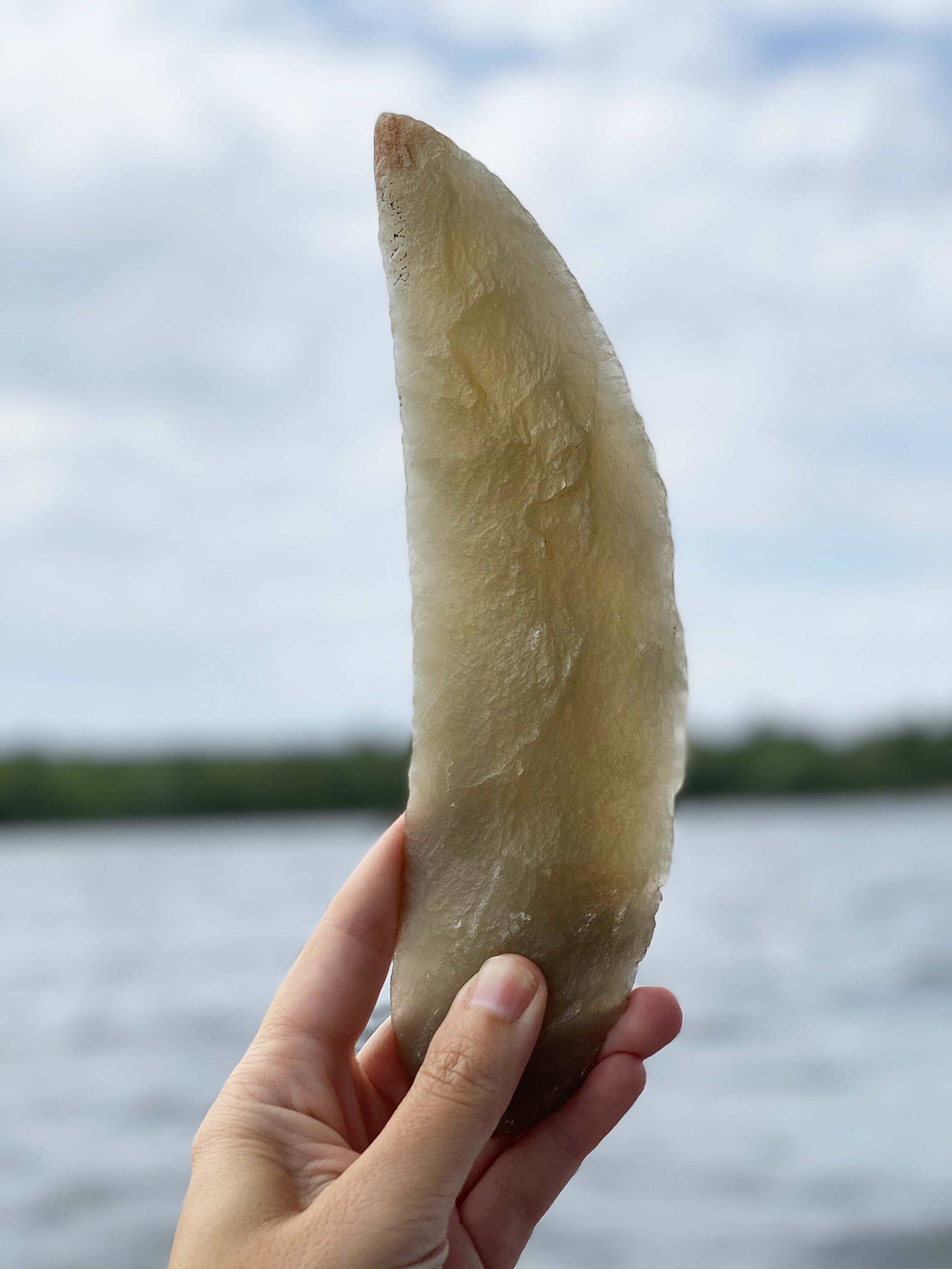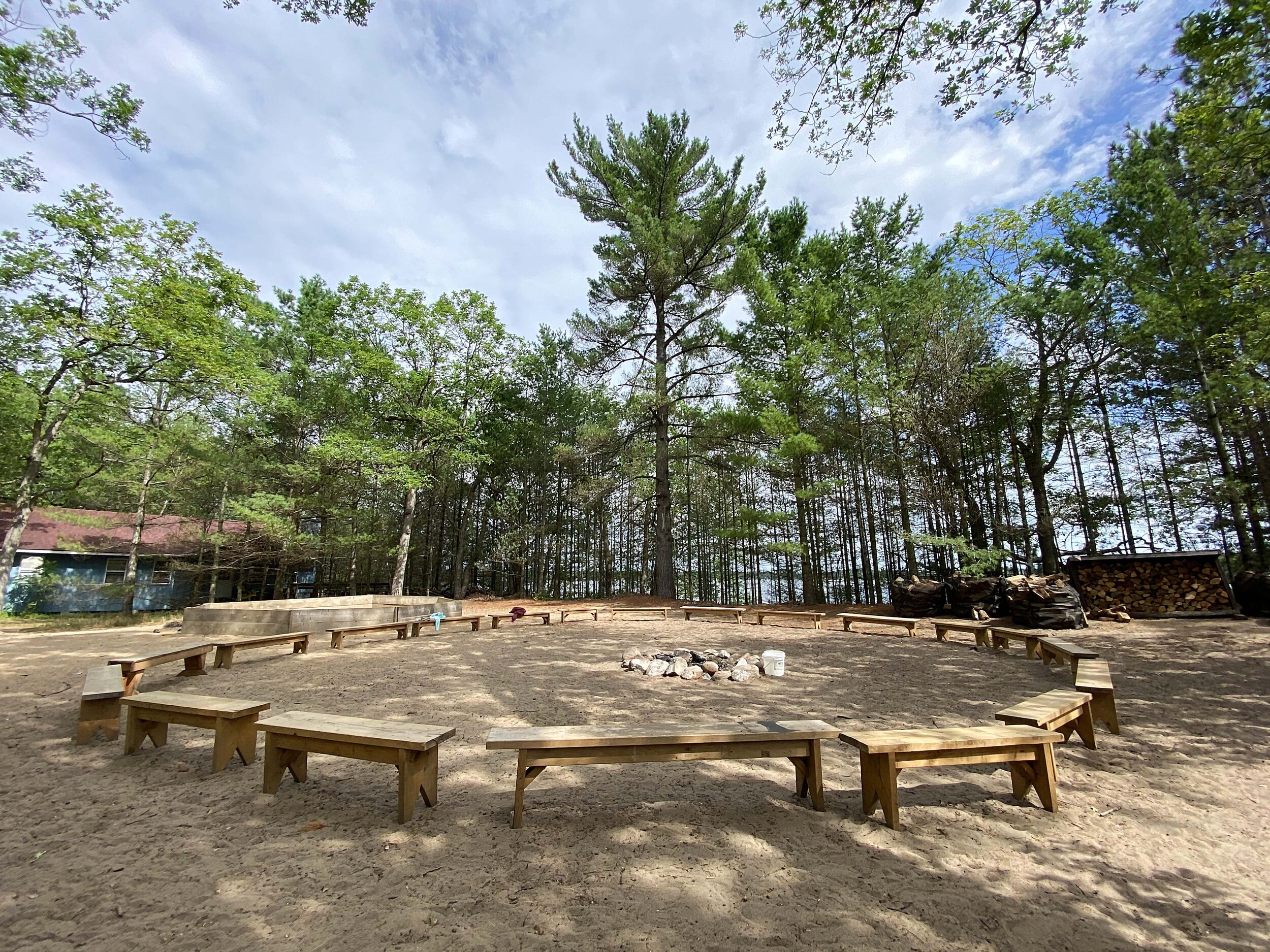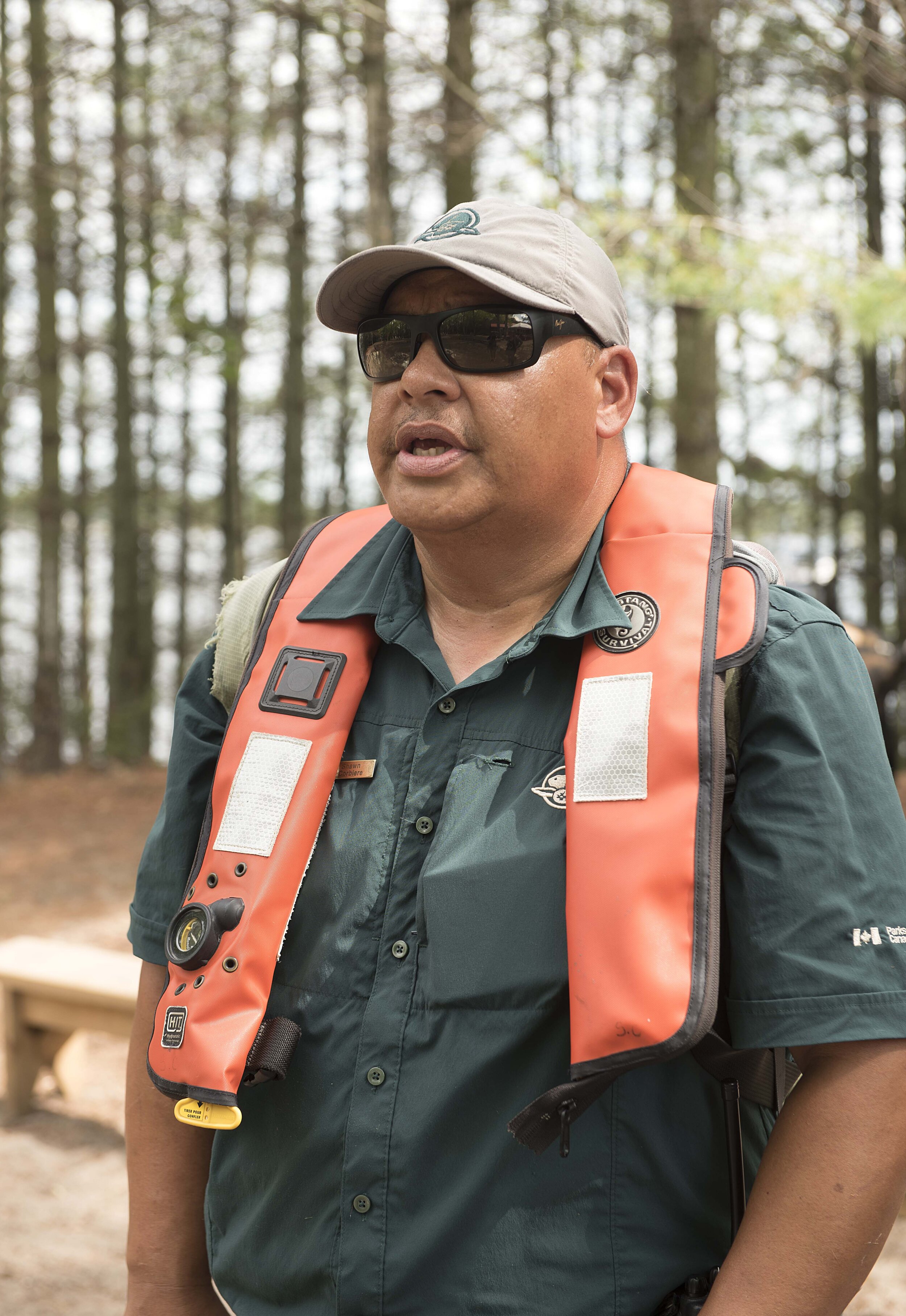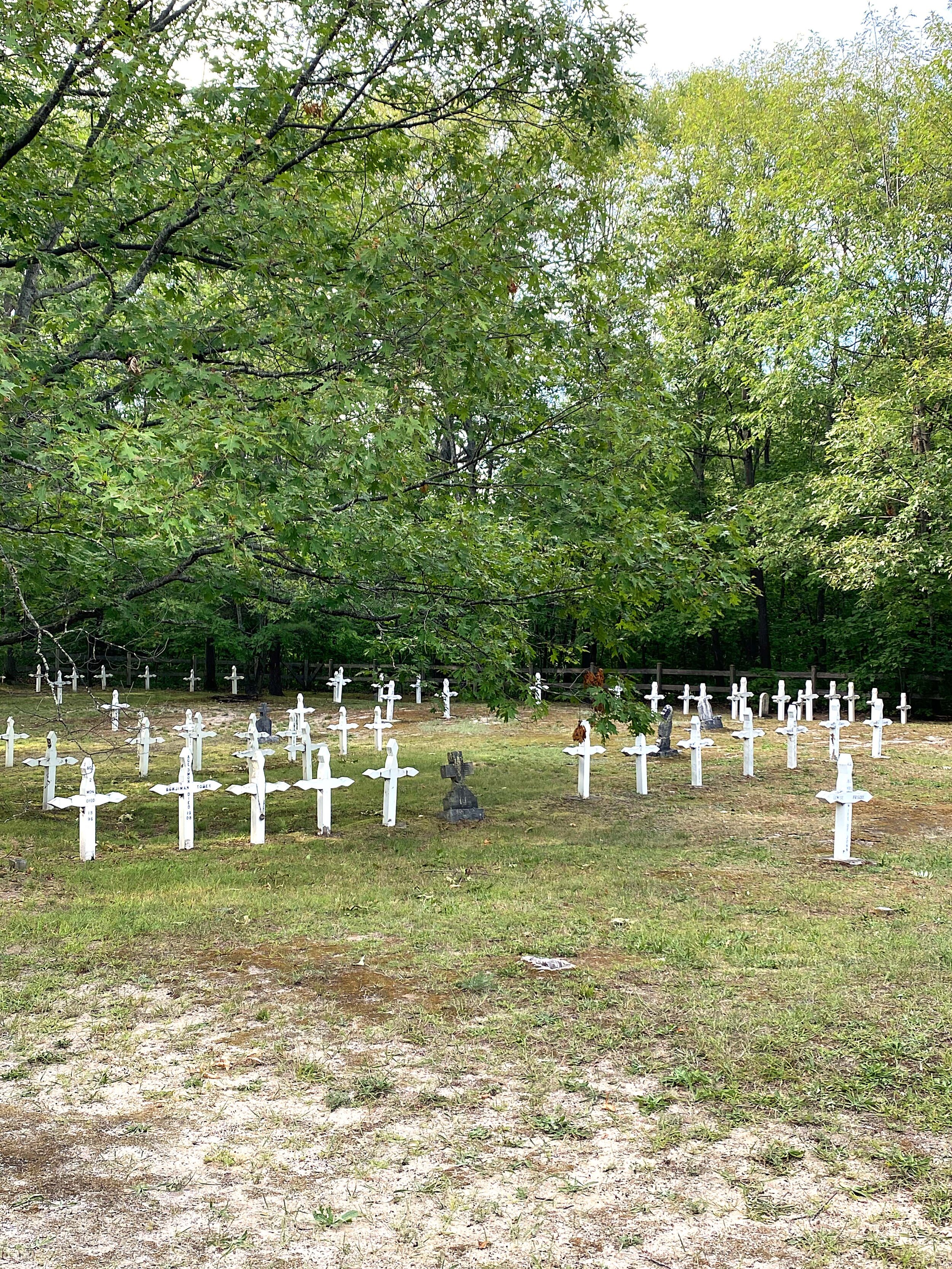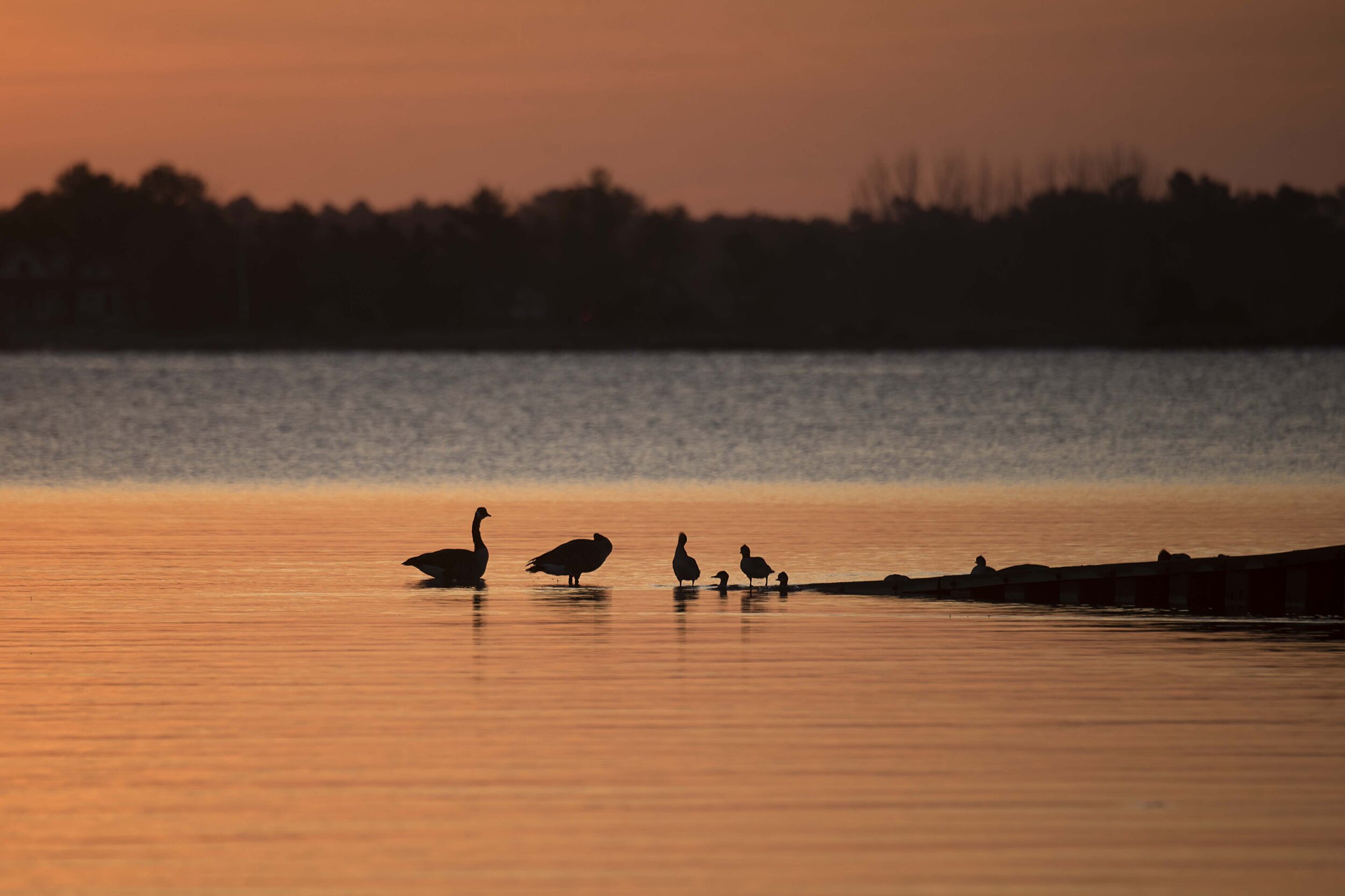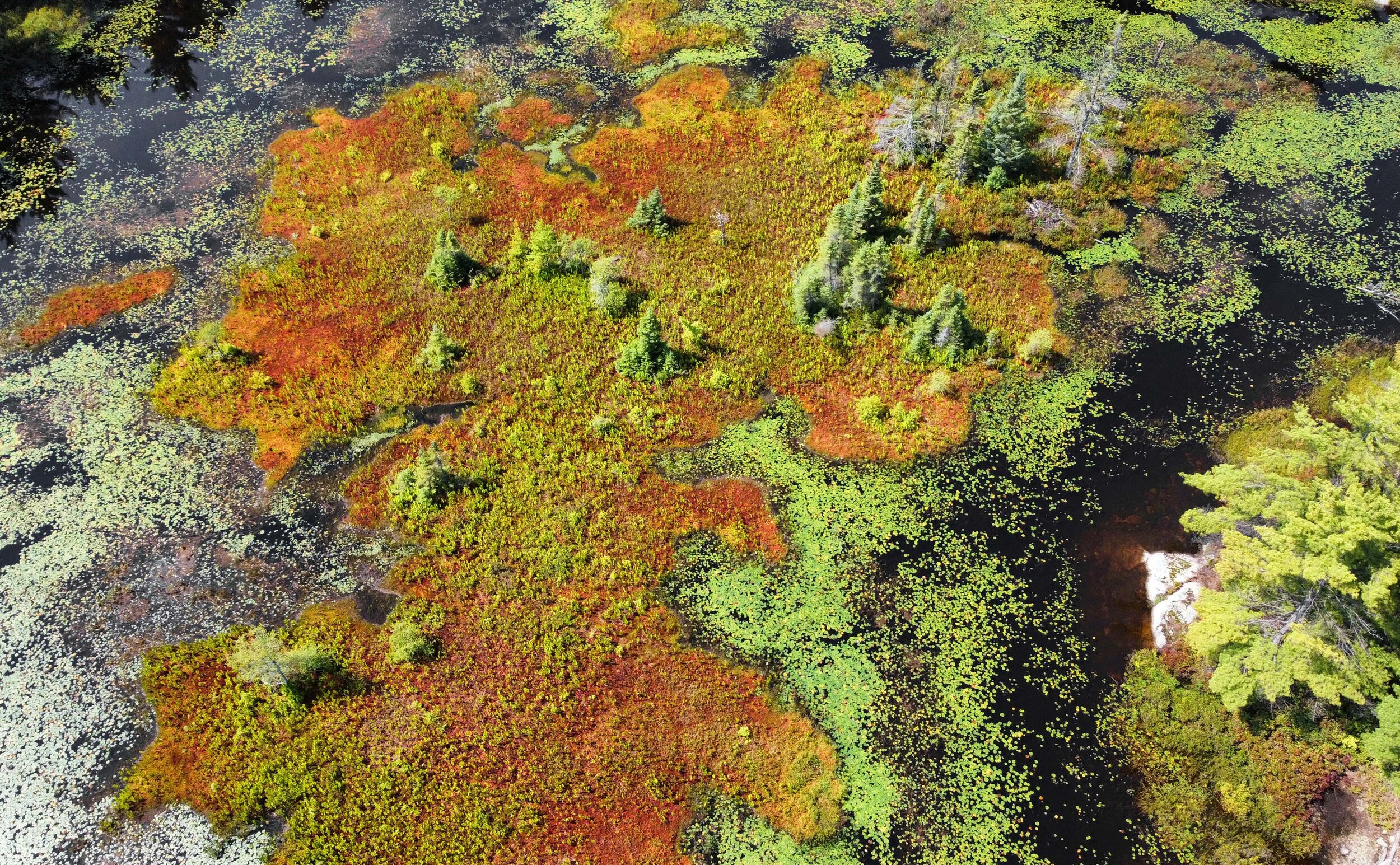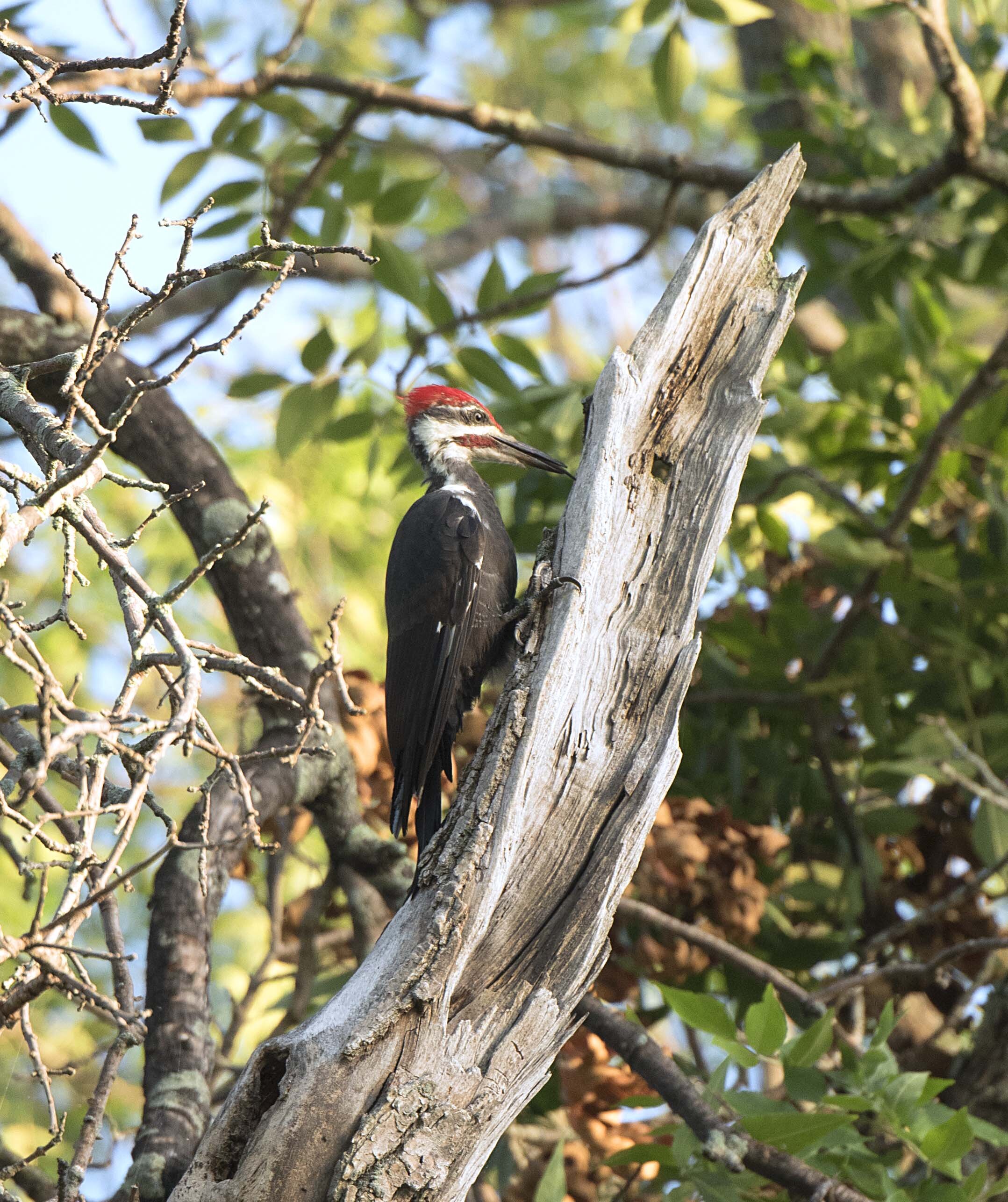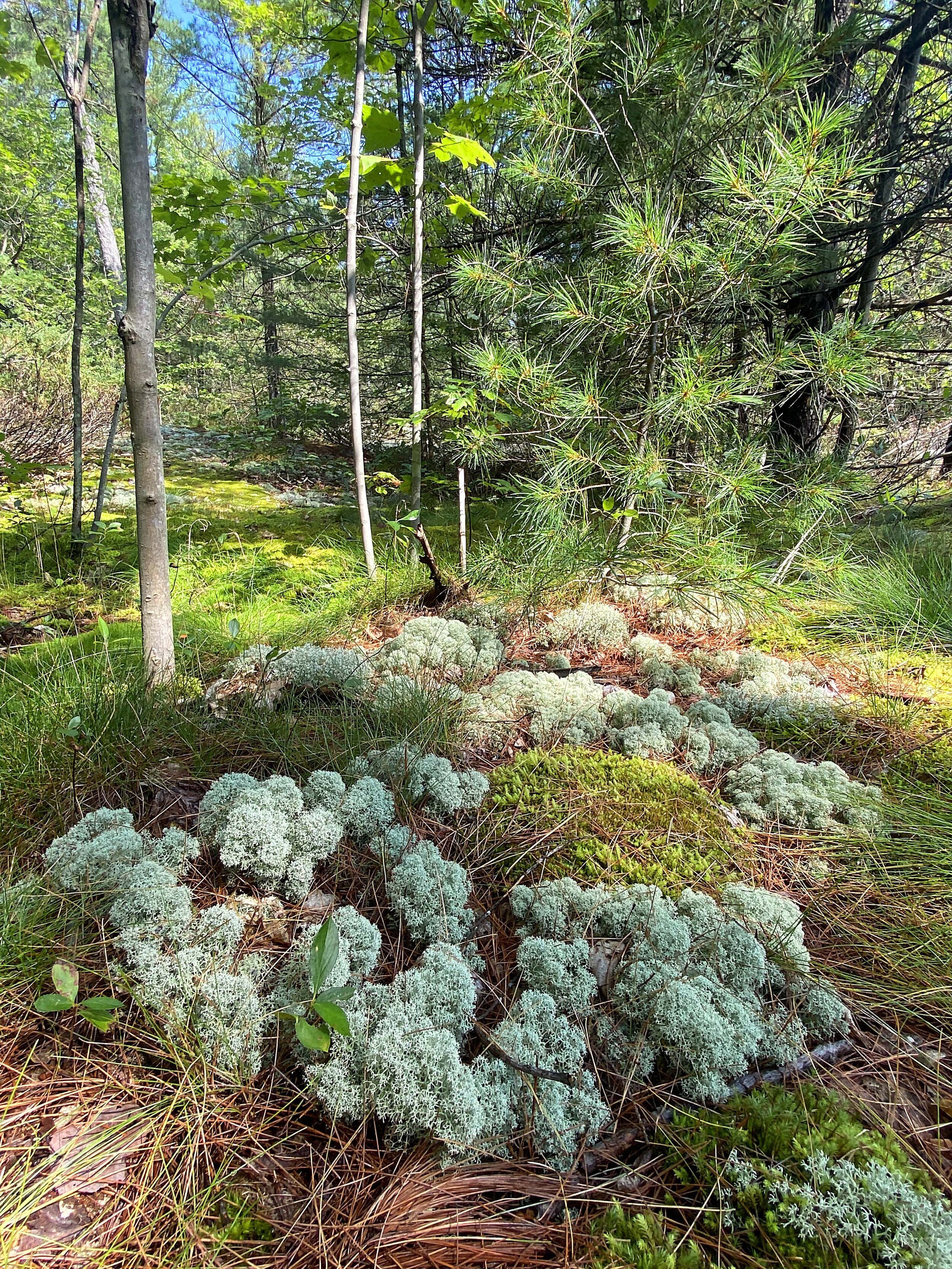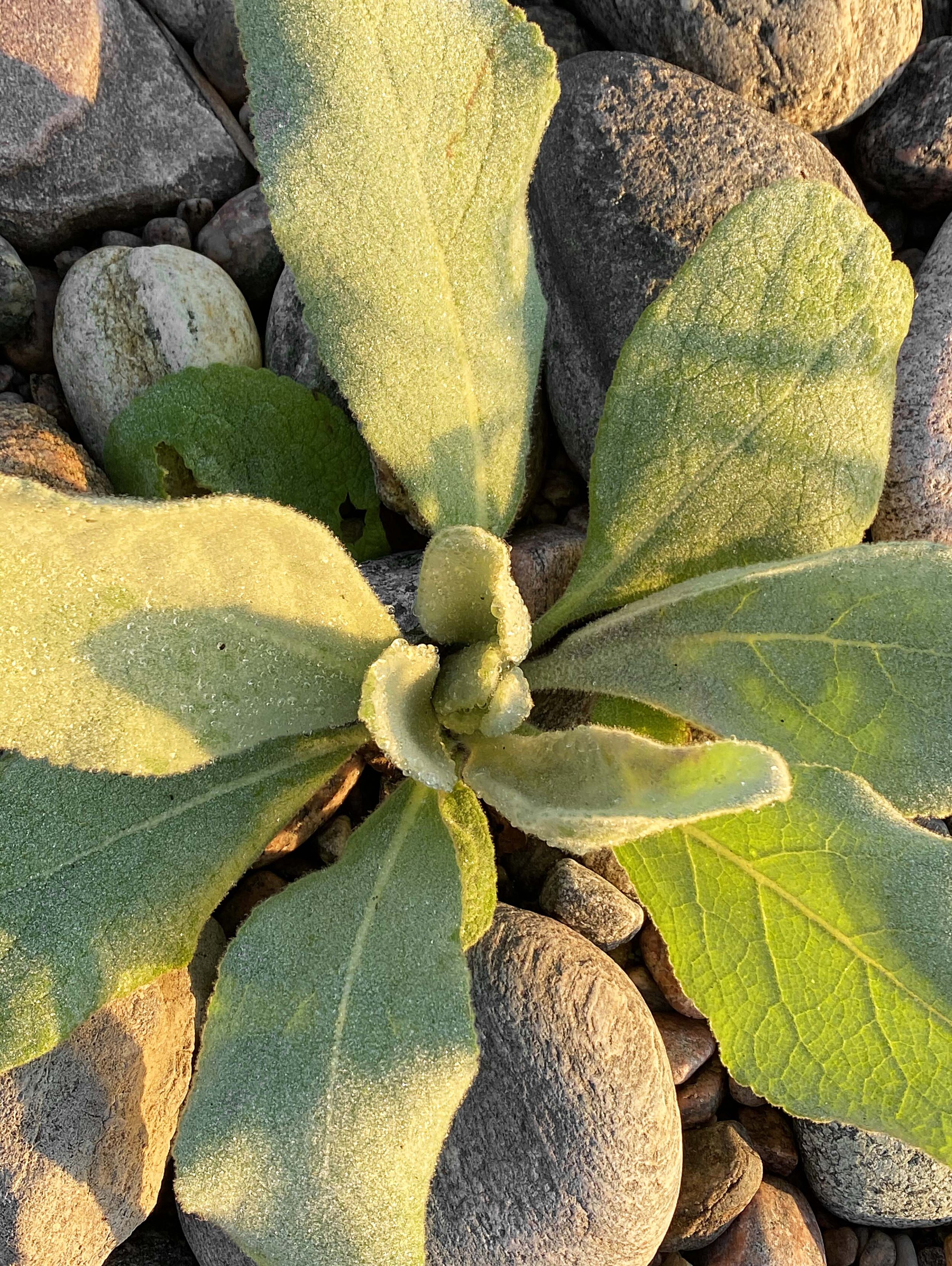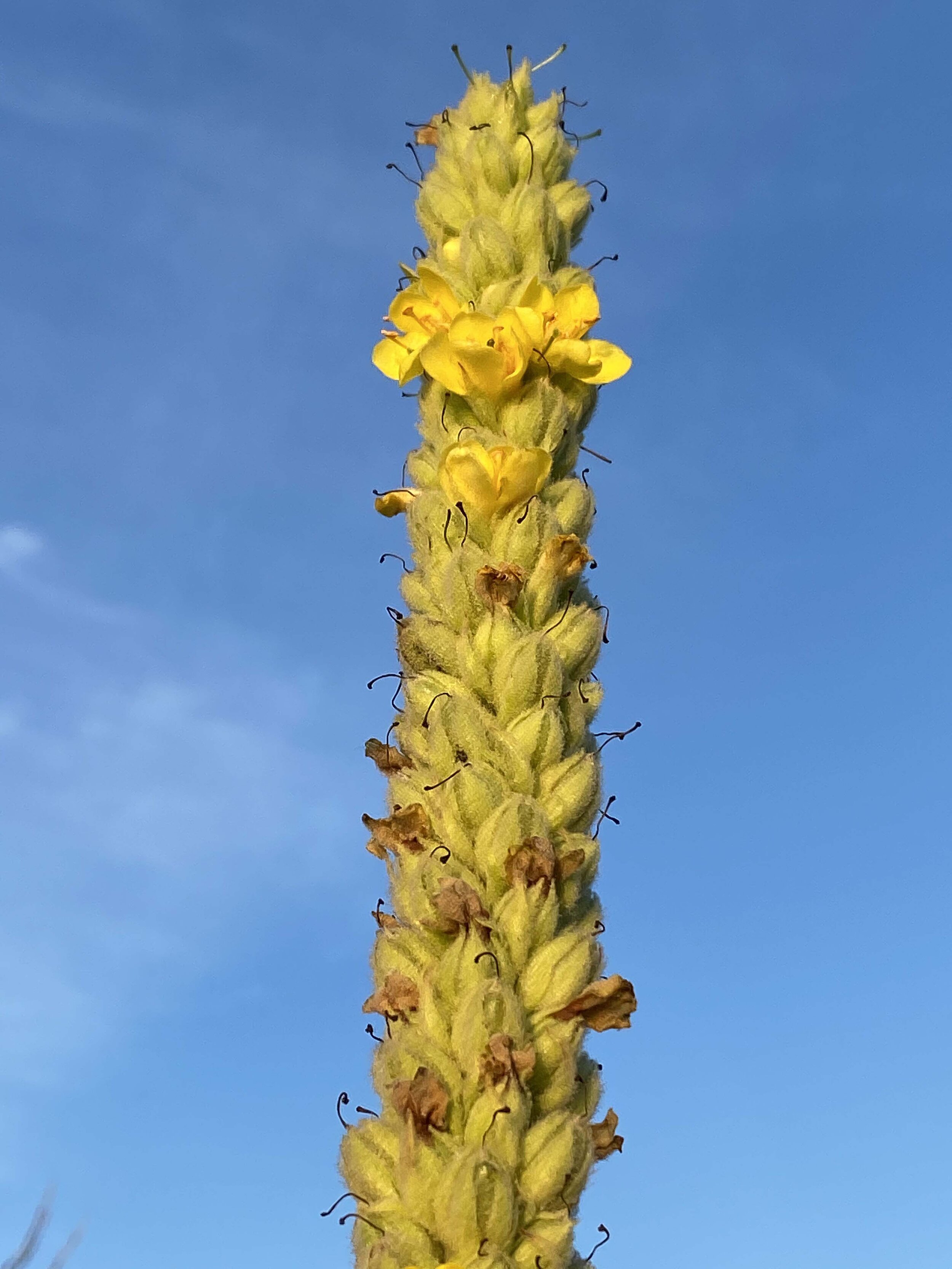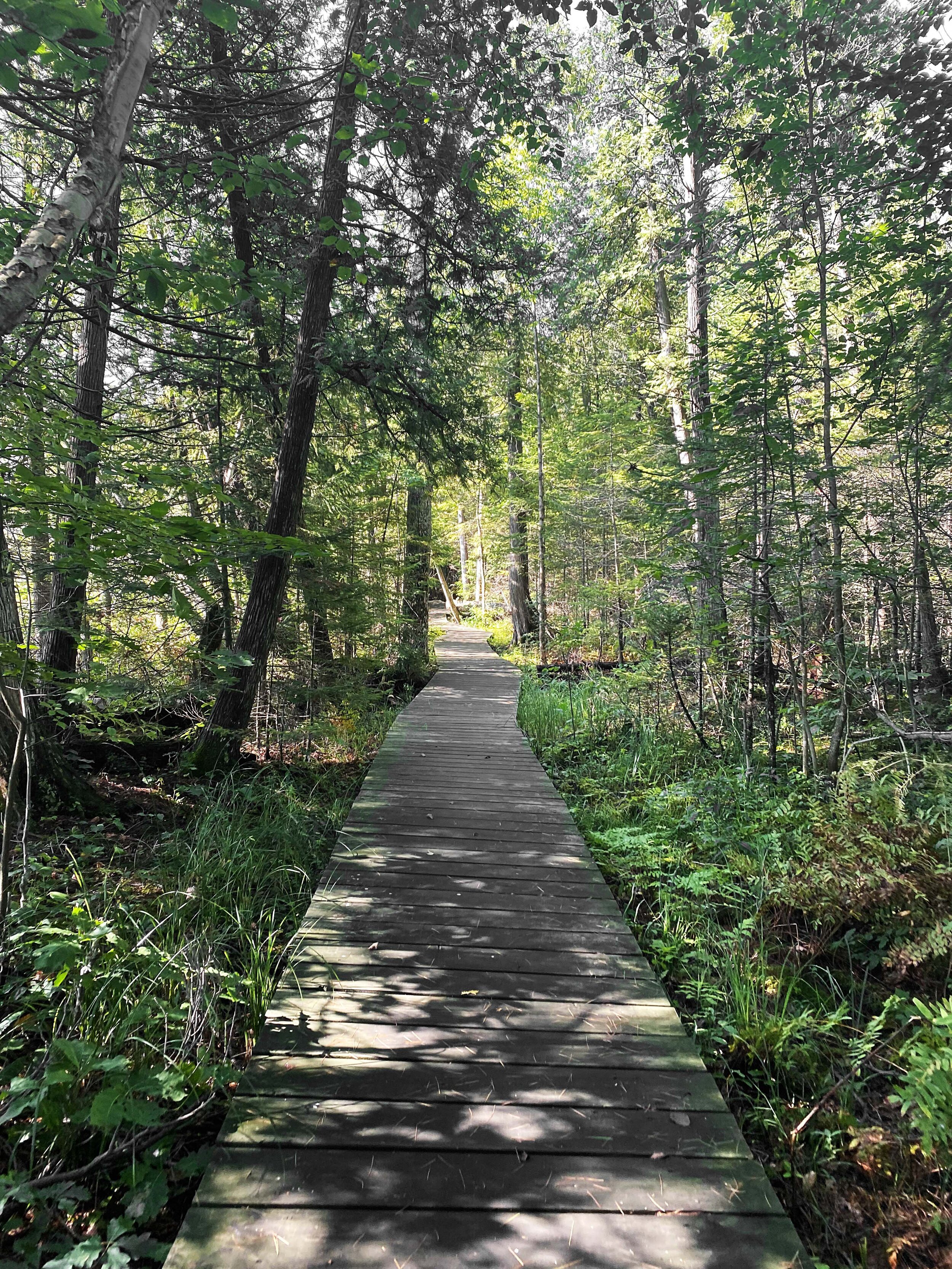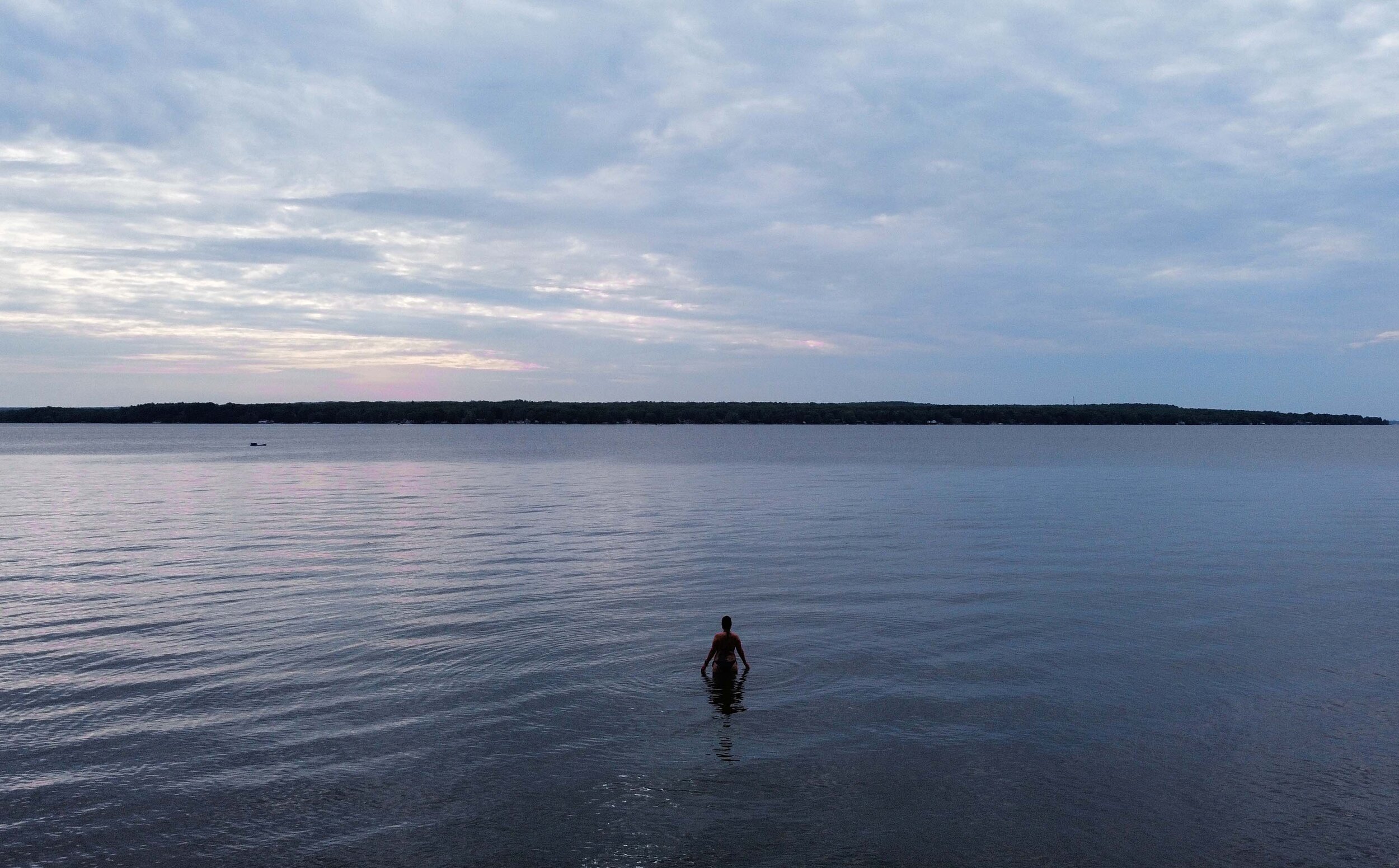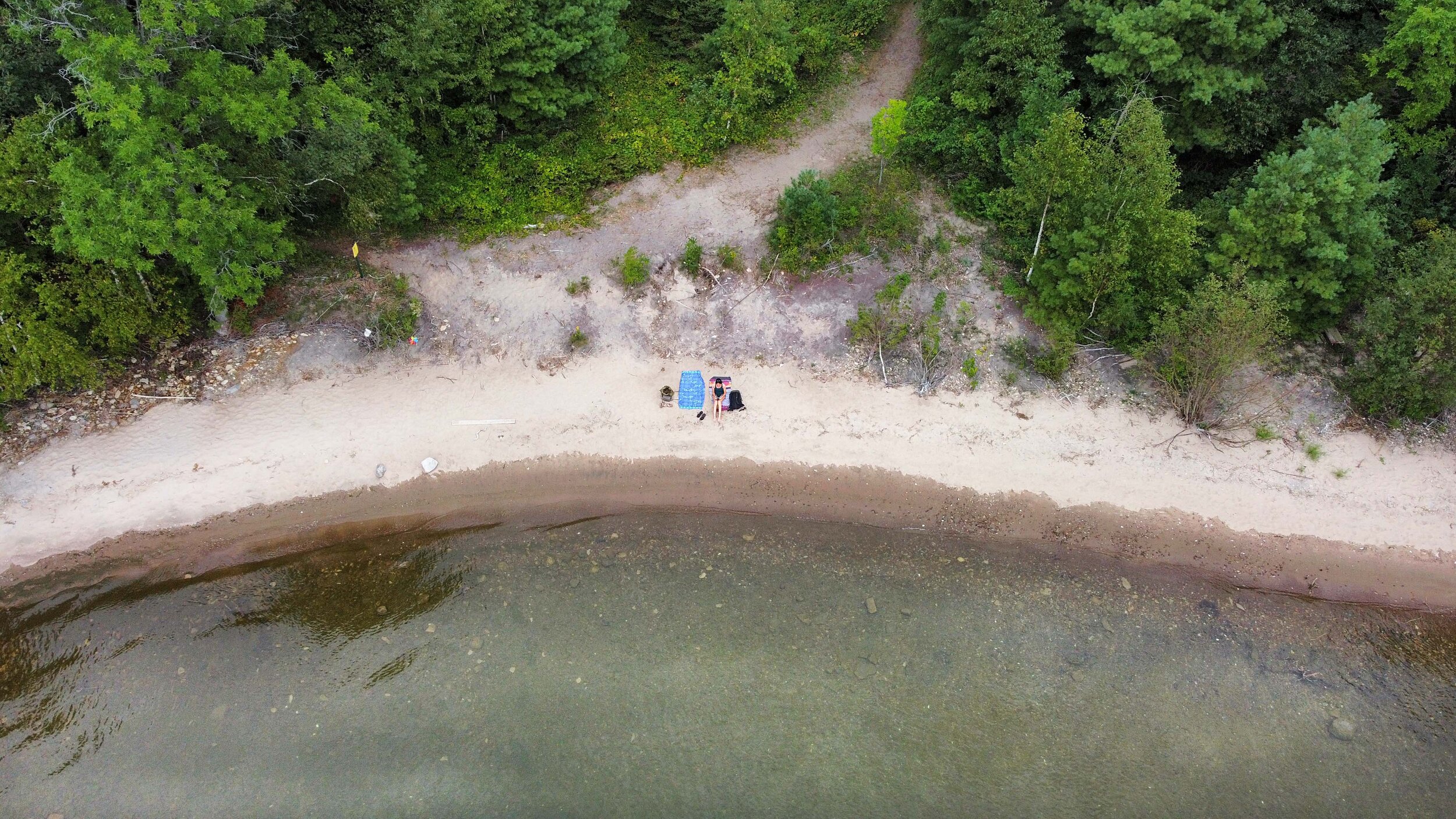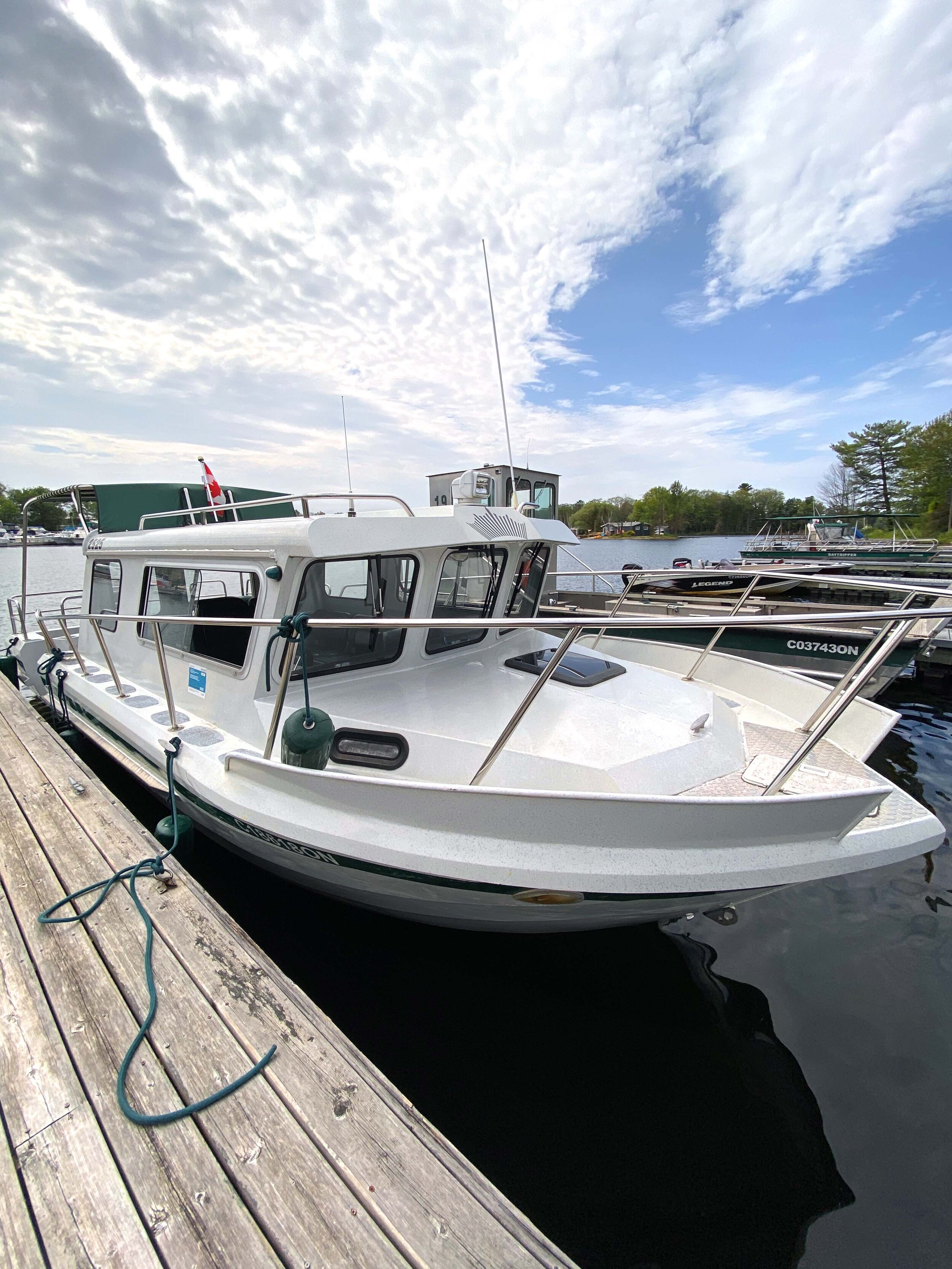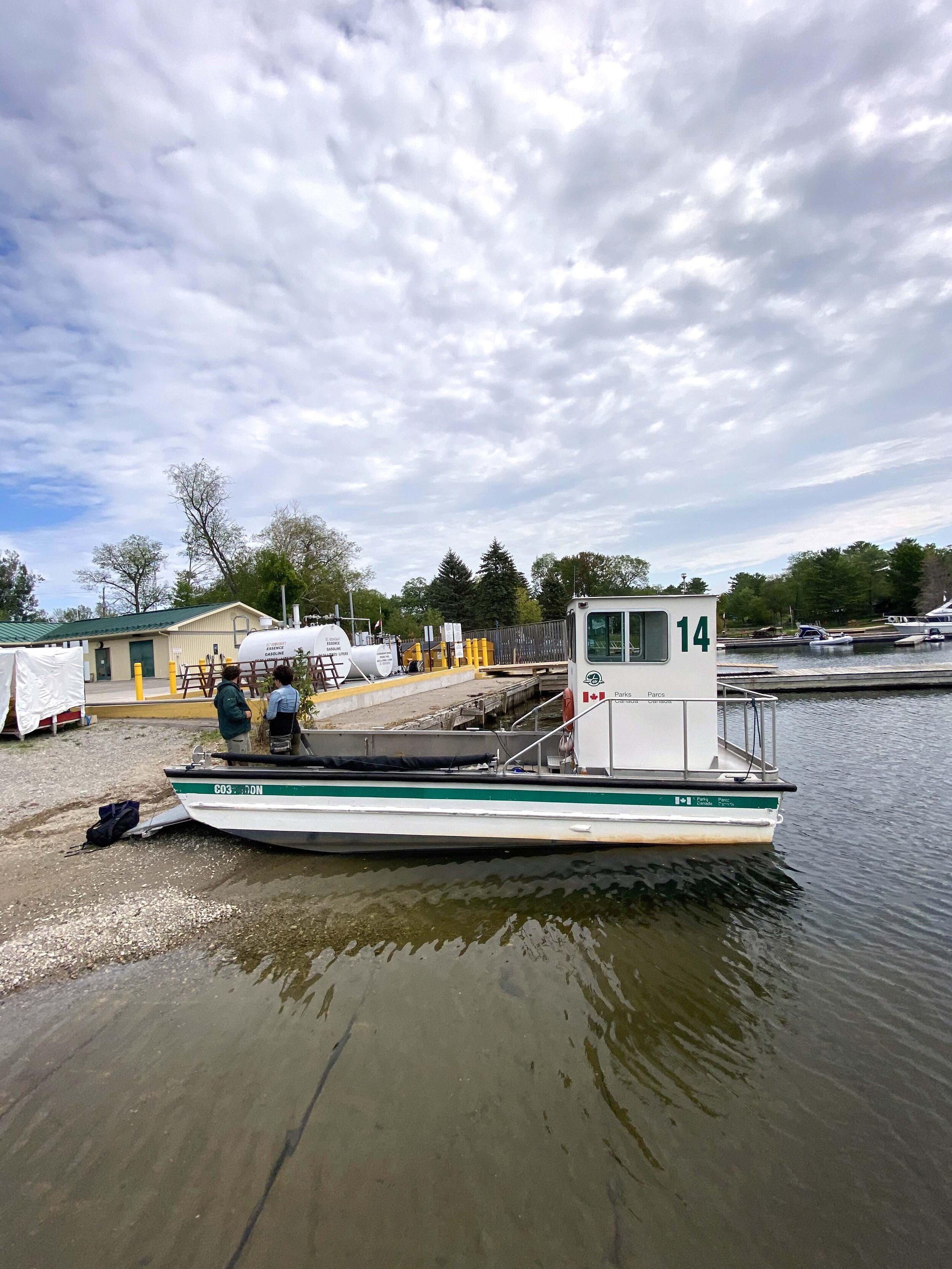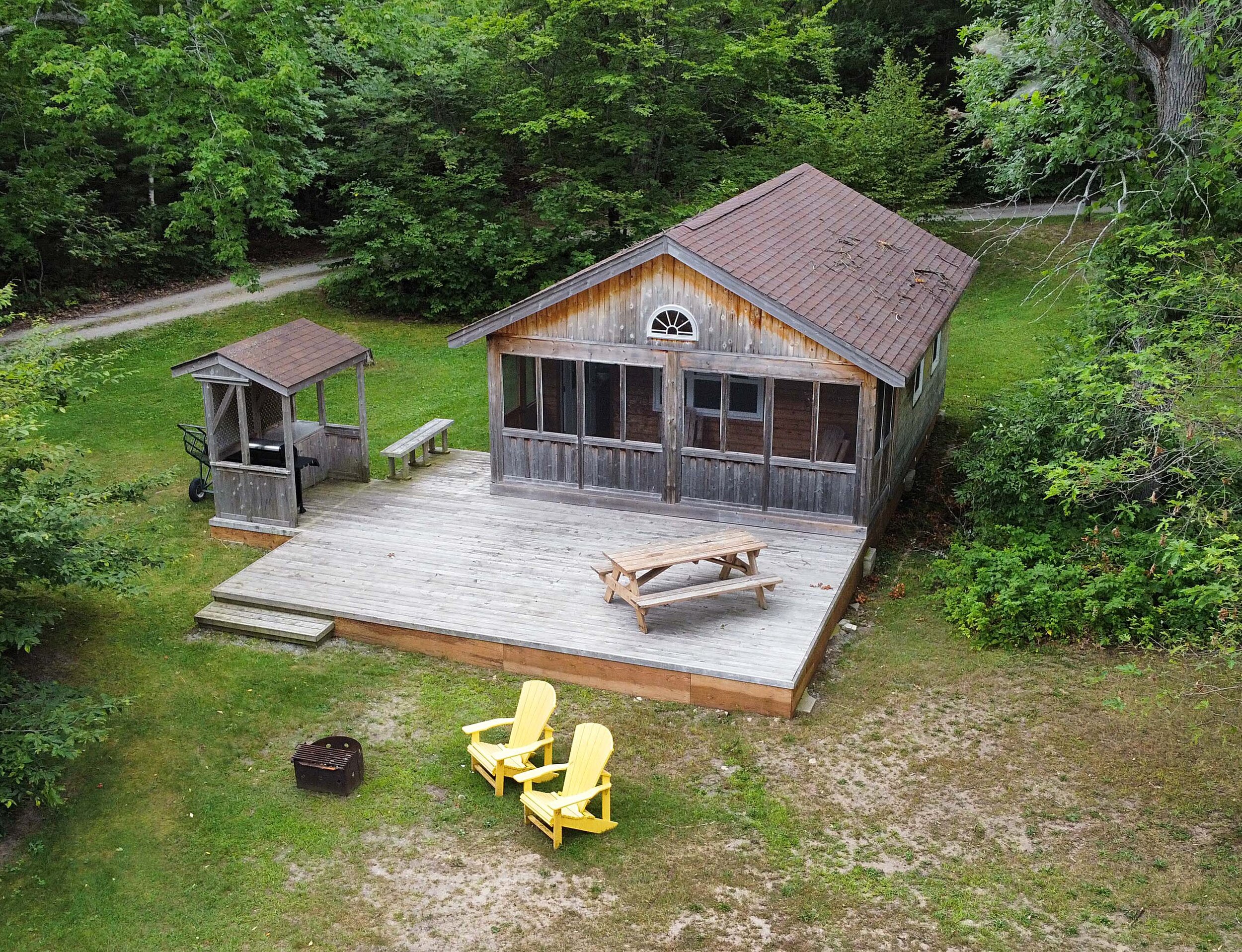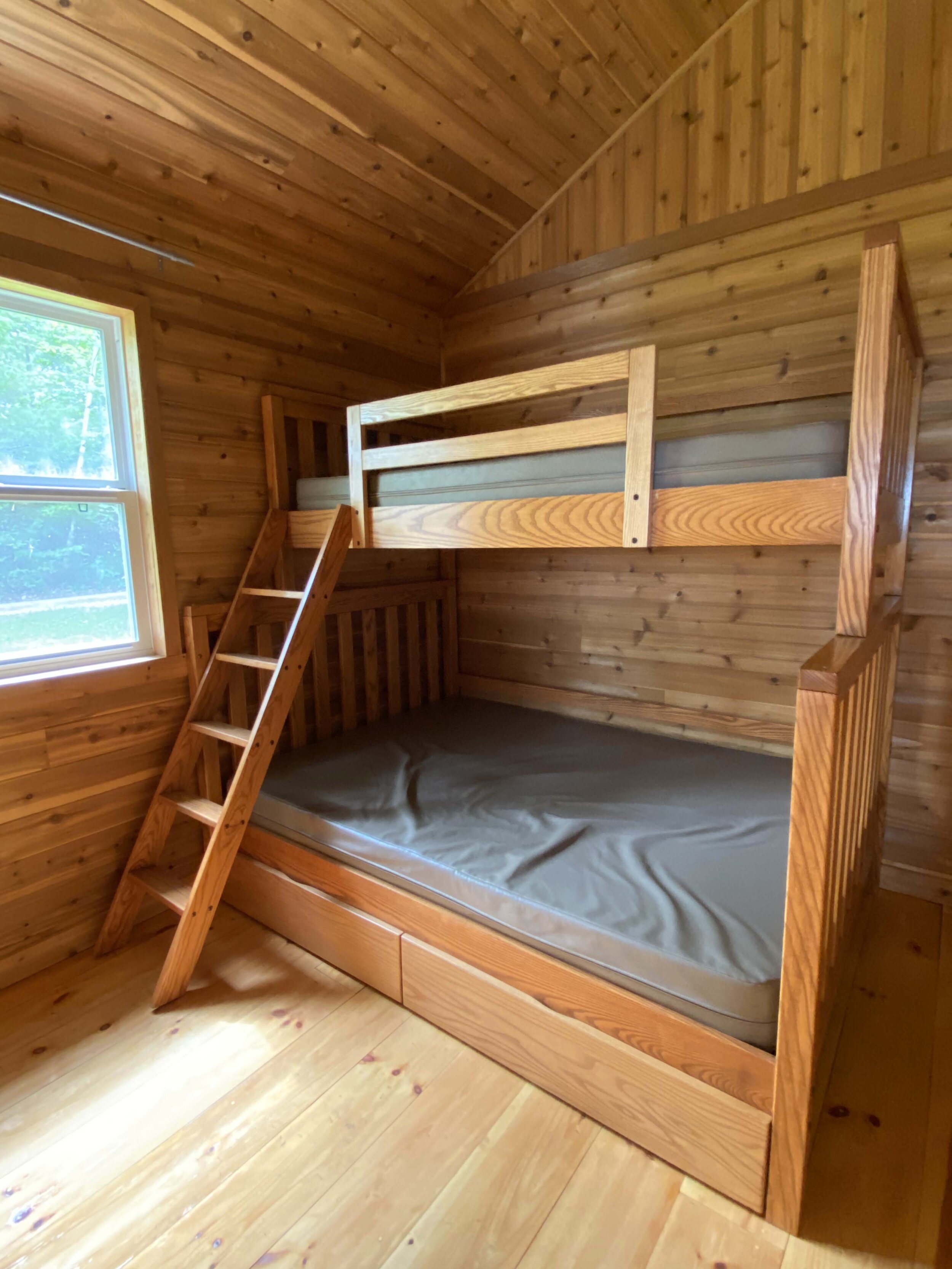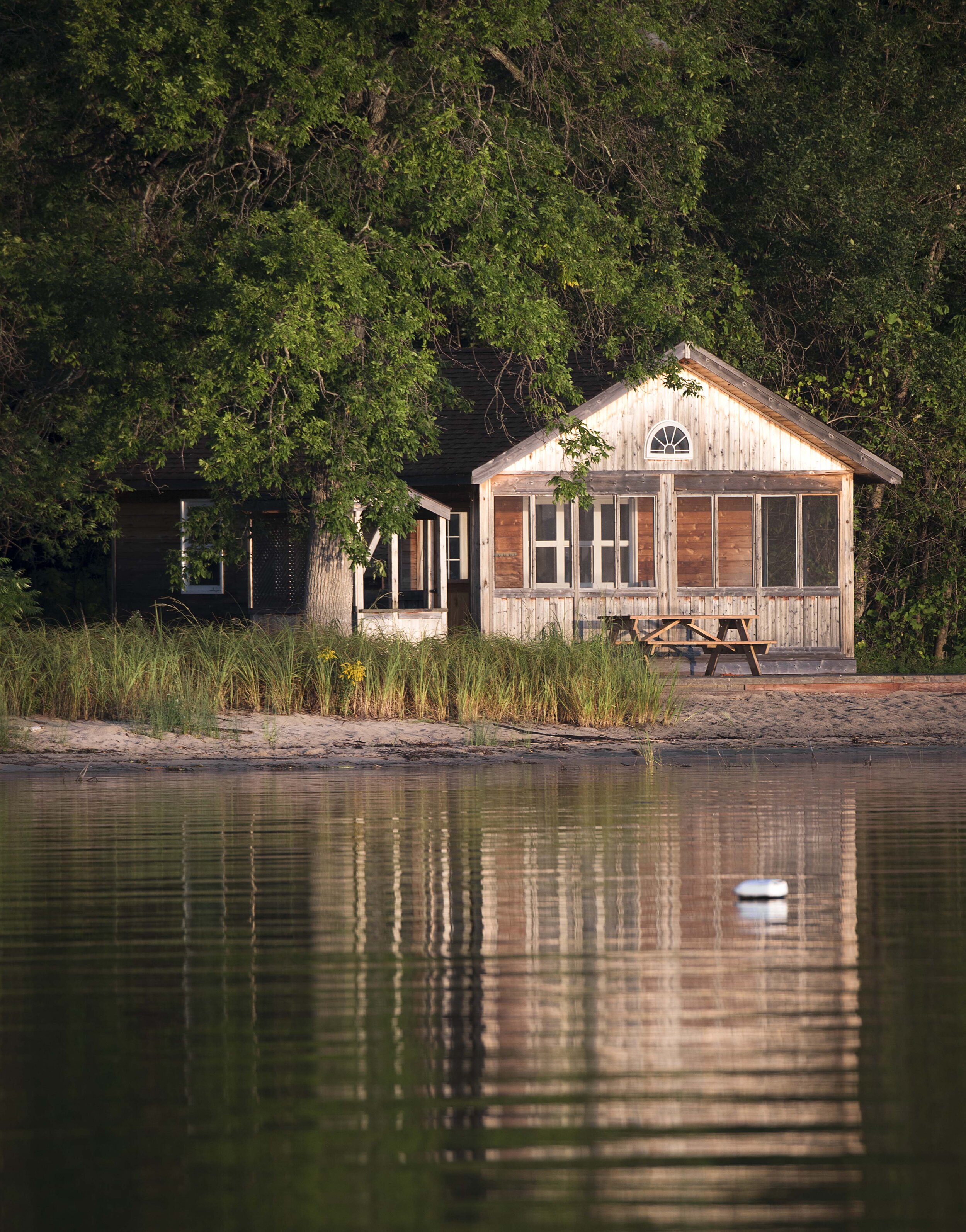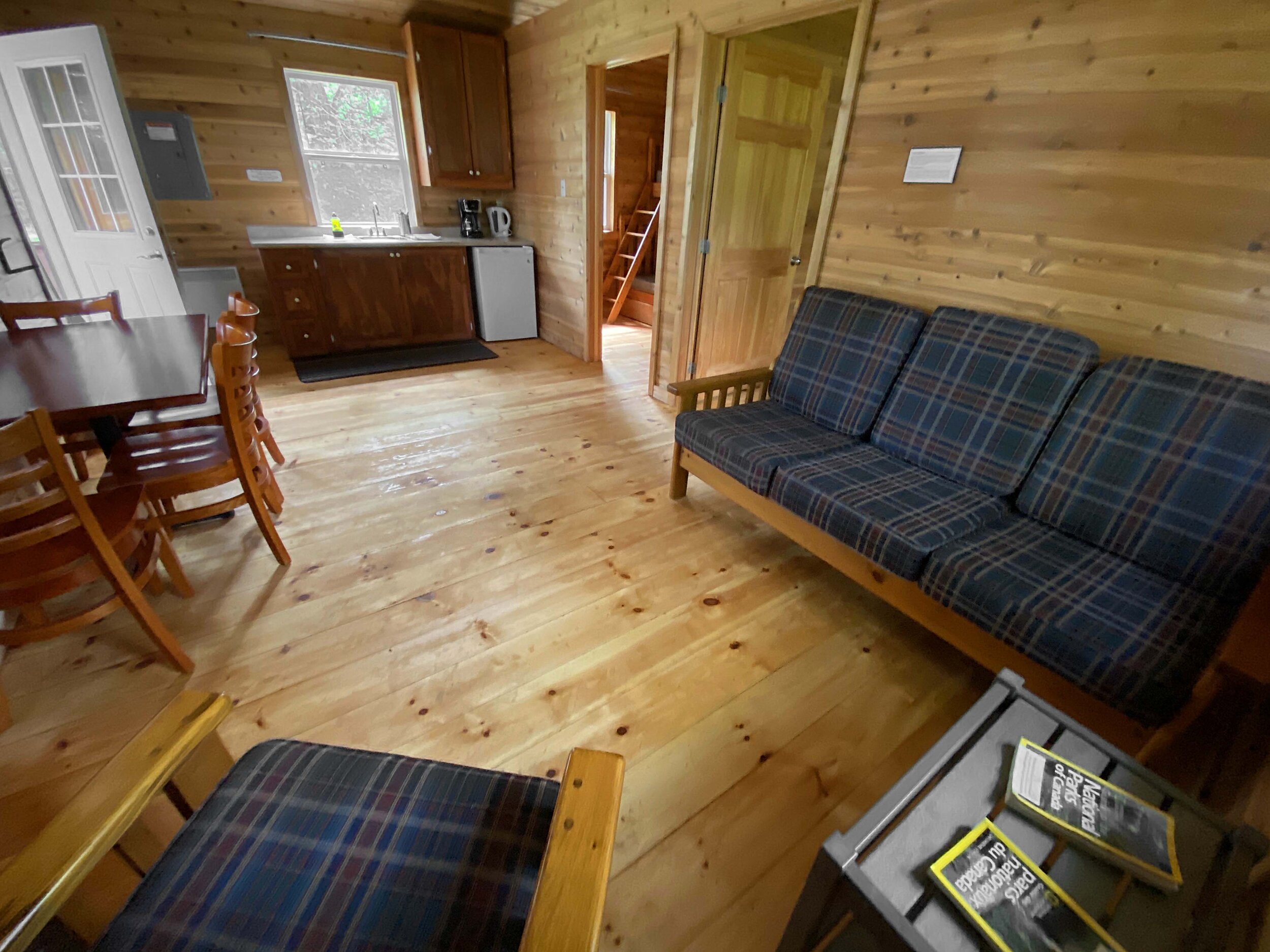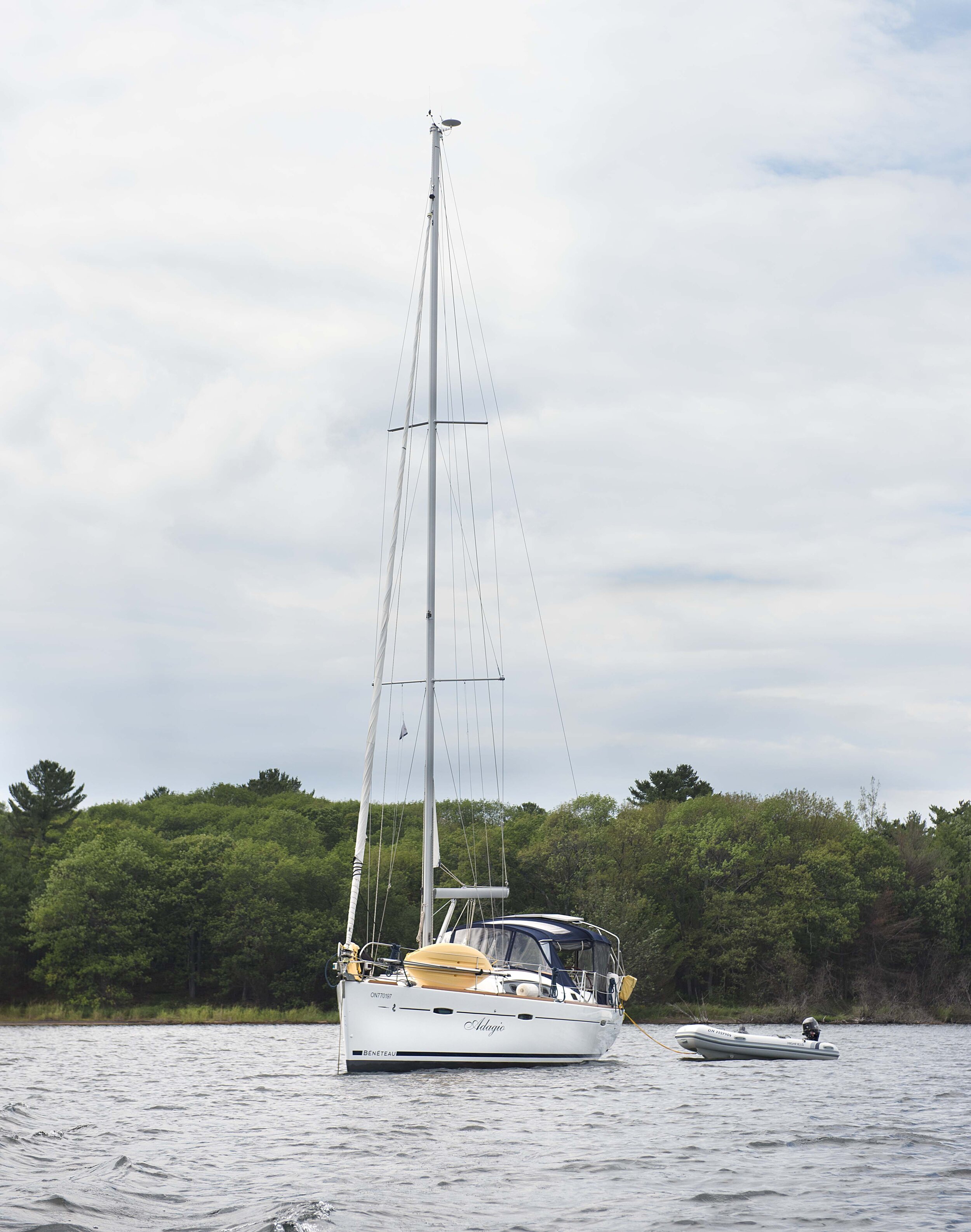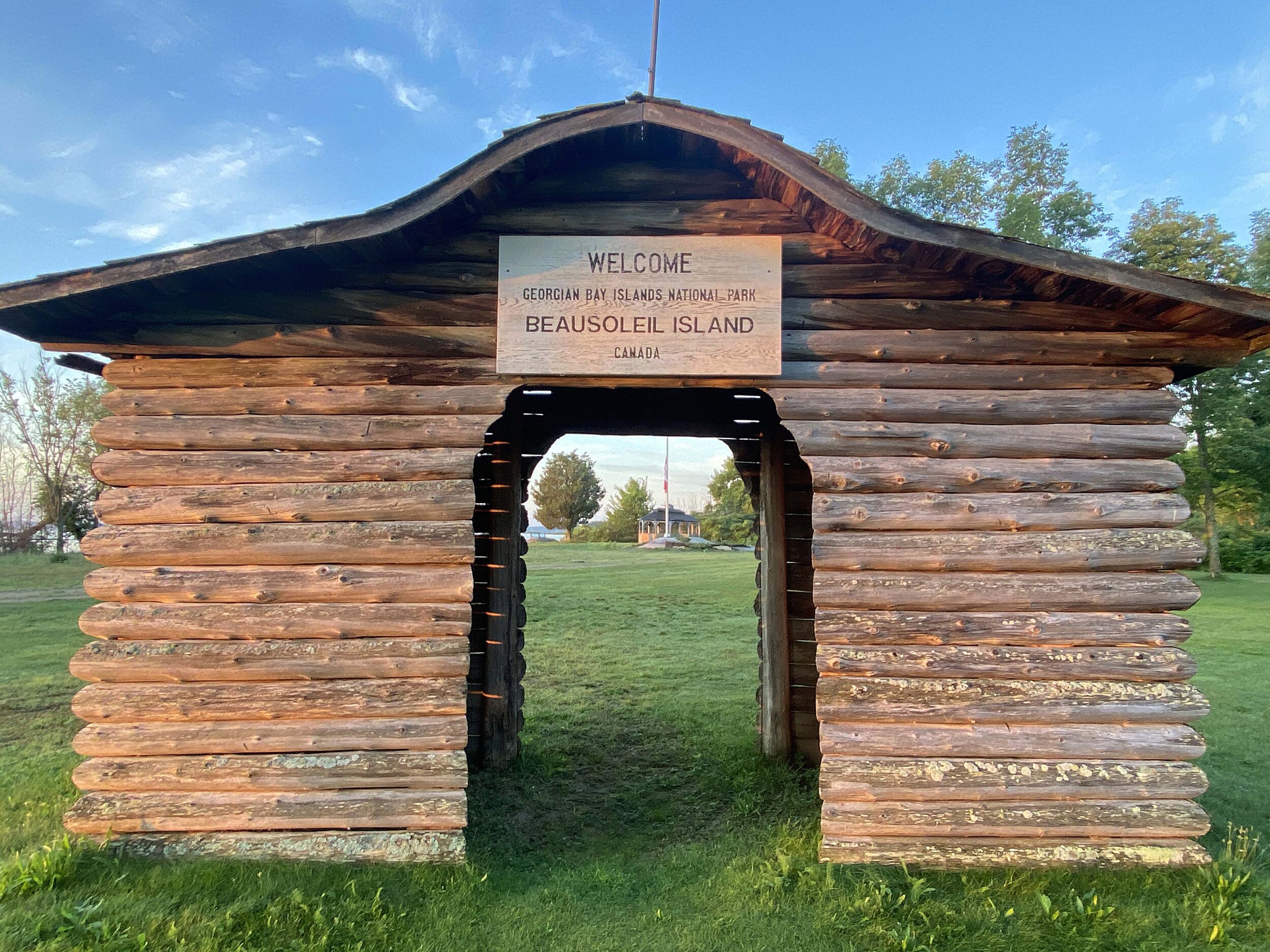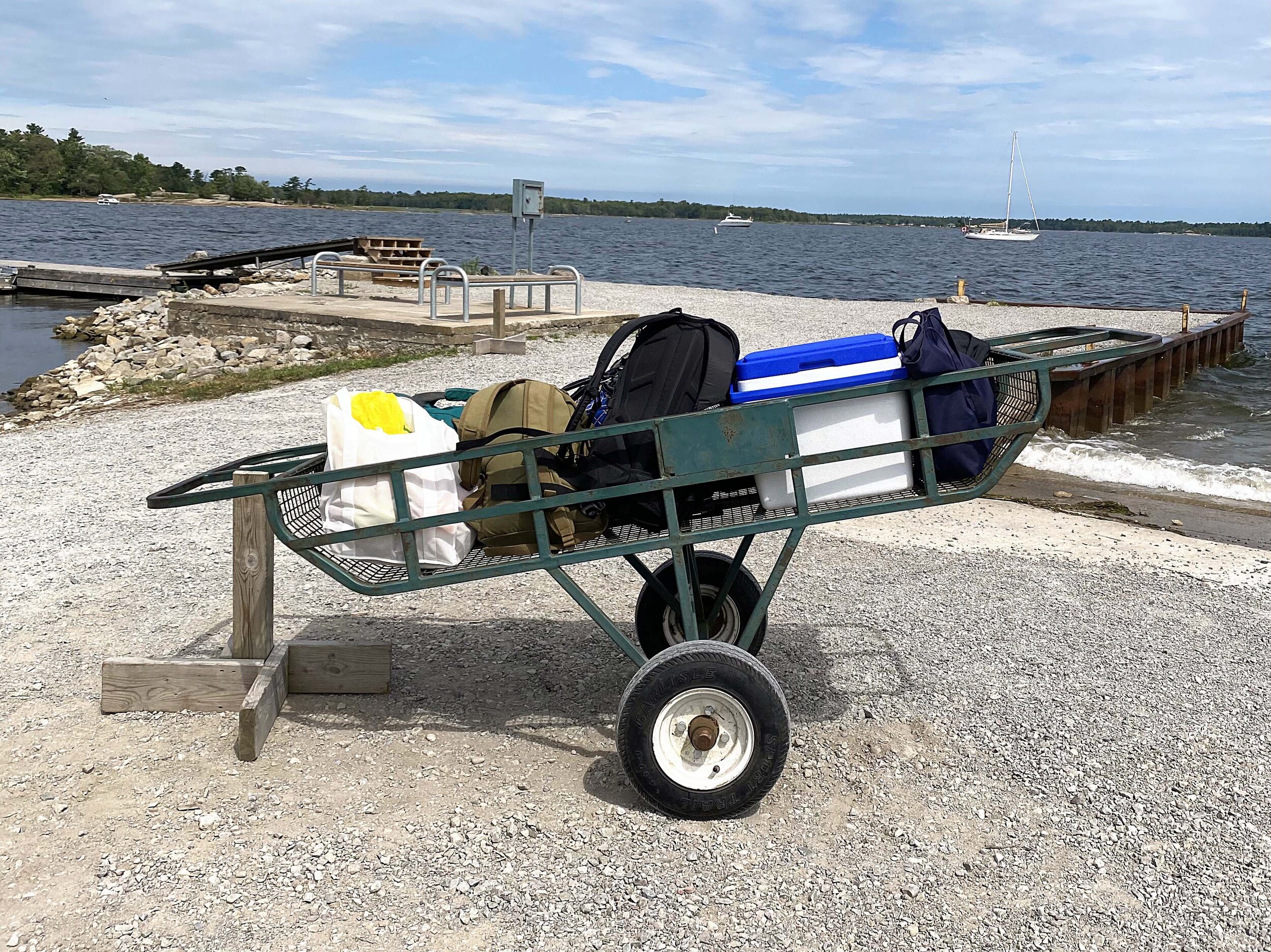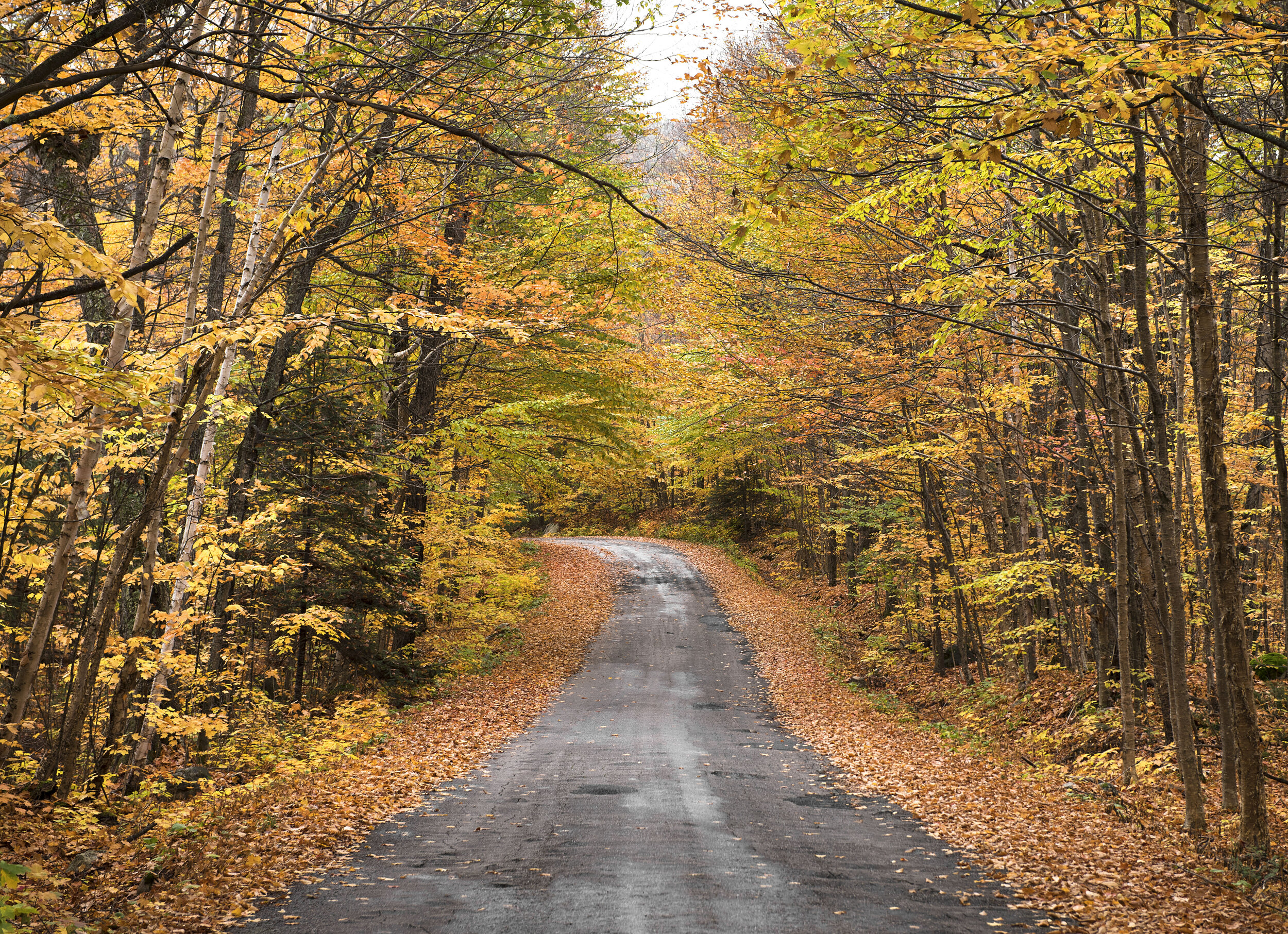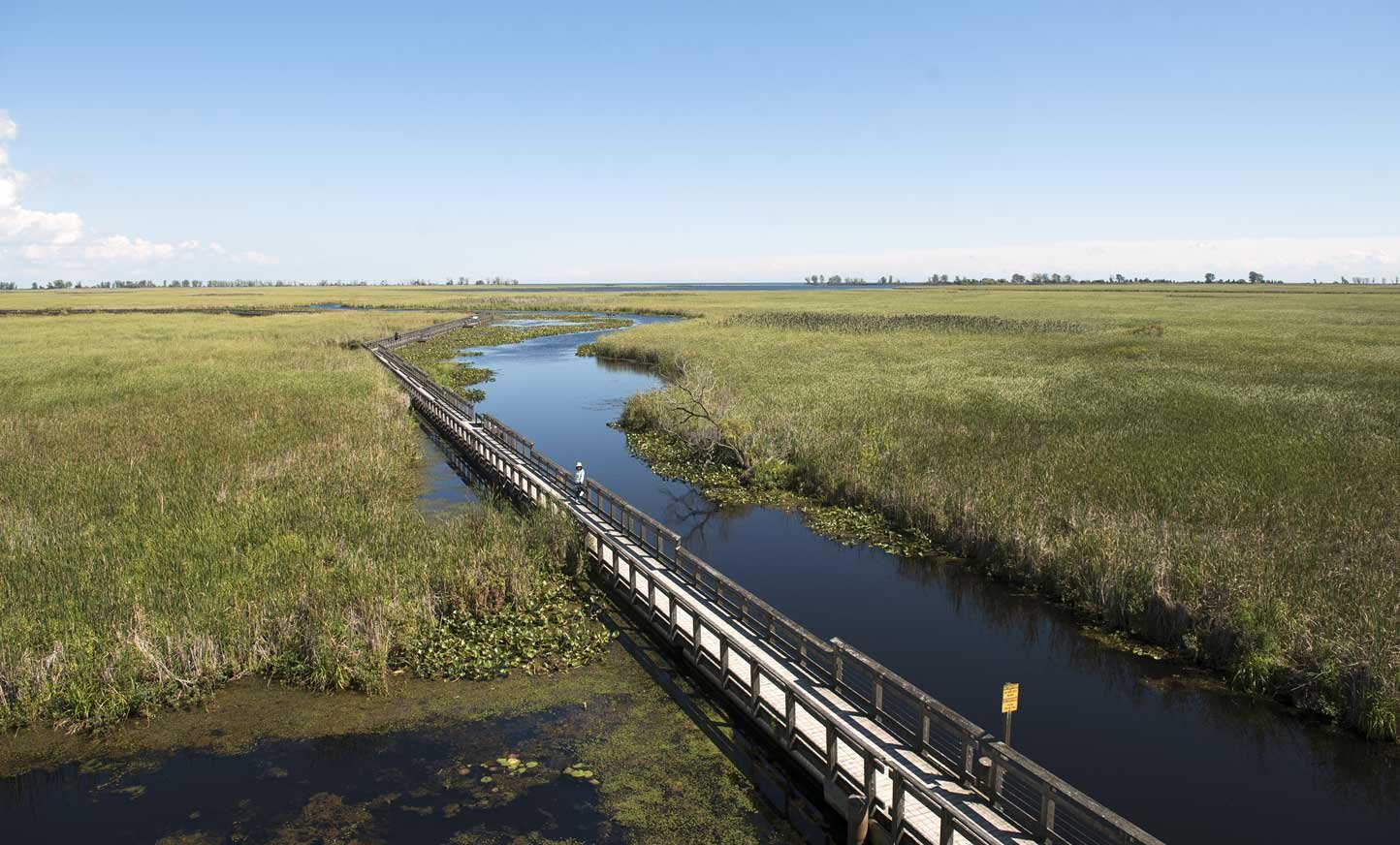Georgian Bay Islands National Park; A Guide to Exploring Beausoleil Island
Stretching from coast to coast to coast, Canada's National Parks are diverse, unique and impressive. Located in southeastern Georgian Bay on Lake Huron, Georgian Bay Islands National Park is home to the world's largest freshwater archipelago and is one of Ontario's most beautiful hidden gems. With landscapes inspired by the Group of Seven, this National Park provides a one-of-a-kind experience for both the seasoned traveler and novice explorer.
History of Beausoleil Island
Named after Louis Beausoleil, a Métis explorer who settled on the island in 1819, Beausoleil Island has a rich and diverse history. From archeological finds dating back to pre-Egyptian times, important Indigenous history in the 1800's, and the establishment of Georgian Bay Islands National Park in 1929, the island's past is fascinating and unique.
Archeological Finds
The Georgian Bay Islands and Beausoleil Island are among the earliest sites of human occupation in the province of Ontario. Each year on the site of Camp Kitchikewana (established in 1919) on the island's eastern shore, an archeological dig takes place to search for and uncover artifacts from the times of the island's first habitation which dates back to the Paleo-Indian period of 10,400-9500 BP. Artifacts dating back to 3500 BC are regularly found including arrowheads over 5000 years old, highlighting the human activity which was present on the island for thousands of years. During the summer months Parks Canada offers interpretative programming from the Visitor Centre in Cedar Spring, where visitors can learn more about the archeological history of the island, and see replicas of tools, arrowheads and other artifacts found just steps away.
Indigenous History on Beausoleil Island
Georgian Bay Islands National Park has a rich Indigenous history, with the islands serving as a traditional stopping place, seasonal campsite, and home to several villages for the Anishinaabeg of the southern Georgian Bay region. In the mid-19th century Chief John Assance led his people to Beausoleil Island after ceding their lands to European settlers in nearby Coldwater, Ontario. Assance’s band settled on the island in 1844, and to this day the foundation of their structures can be seen as elevated mounds and depressions in the ground at Camp Kitchikewana. These include over 15 dwellings and a church. Due to the lack of agriculturally viable soil on Beausoleil Island (the island is primarily a mix of sand and Canadian Shield), life for the Anishinaabeg on the island was difficult. As starvation set in, tribe members began to resort to cannibalism for survival. Many of the band moved to nearby Christian Island, and those who remained lived by fishing, hunting, and gathering.
Cultural Traditions on Beausoleil Island
Known to the Anishinaabeg as a “rocky place floating about the mouth of a river”, the island served as the location for many cultural traditions, mainly relating to women. The most important was the transformative girlhood to womanhood ritual, which involved a girl spending several days on the island fasting, followed by a feast of berries marking the transition from girlhood to womanhood. The island was also used as a traditional harvesting ground for berries and plants used in traditional ceremonies.
Preservation of Indigenous History and Culture
The Métis Nation of Ontario, and the Georgian Bay Métis Council sit on the Cultural Advisory Circle for Georgian Bay Islands National Parks. The Circle promotes the Indigenous cultures of the area with respect to Georgian Bay Island National Park, and all archaeological dig locations must be approved by the Circle each year. The collaboration between the Cultural Advisory Circle and Parks Canada has been integral in keeping the culture, heritage, and preservation of the island’s history intact, and true to its historical roots.
Located just off the Heritage Trail near the Cedar Spring campground you'll pass by a small graveyard called the Cemetery of the Oak. Dating back to the 1800's, this cemetery was a burial ground for Métis on the island. The cemetery fell into disrepair in the early 1900's but after Beausoleil Island became a National Park in 1929, Parks Officer George Lynn, assisted by descendant families, local churches, and town officials, set out to identify the burials in the cemetery and restore the grave markers. In 2013, modern technology revealed several graves located outside the original fencing, and the fence was repositioned to include them and in order protect the resting place of these former residents of Beausoleil.
Visitors to Georgian Bay Island National Park can learn about the history of Beausoleil Island with regular interpretive programming lead by the park’s Indigenous Interpreter, Shawn Corbier. Corbier’s Indigenous roots and knowledge into the park’s past is invaluable, and gives visitors important insights into the island’s indigenous history.
Landscapes and Wildlife of Beausoleil Island
Beausoleil Island has a wide variety of spectacular landscapes. At the southern end of the island, you'll find deciduous forest and hardwood forest, a good representation of the West St. Lawrence Lowlands natural region. If you skirt the shoreline in the southern end of the island, you'll also find important wetlands teaming with wildlife, including a wide variety of birds, like the great blue heron, Canada geese, loons and common goldeneye just to name a few. We spotted a gorgeous pair of pileated woodpeckers right outside our cabin in the heart of the Cedar Spring campground! For those who love to swim, the south end of the island also has several white sandy beaches, perfect for taking a quick dip.
As you move north, you'll pass through an impressive hemlock forest, with chipmunks and squirrels scurrying about, and then the landscape swiftly changes into stunning Canadian Shield with windswept pines dotting the landscape. In the northern end of the park, you'll also find several inland lakes, and well as small ponds and bogs scattered among rocky outcrops, which are home to 33 species of reptiles and amphibians; more than anywhere else in Canada. One of those species is the eastern Massasauga rattlesnake; the only snake in Ontario whose venom is poisonous and potentially dangerous, and a species that has been identified as requiring special protection
While the rattlesnakes stayed hidden during our hikes, we spotted a garter snake on one of the trails. We also passed several bogs and small ponds bursting with frogs, as well as many small frogs along the forest paths, creating the perfect ecosystem and food source for snakes to thrive. The island is also home to black bears, and racoons, so campers are well advised to keep their sites clean and free of food odors.
Beausoleil Island also has an incredible variety of plants, which can only be found within a relatively small area and is a unique combination of northern and southern species. Near the Cedar Spring campground, we spotted several plants by the shoreline that we’d never seen before.
What to do in Georgian Bay Islands National Park
Hiking on Beausoleil Island
Hiking is one of the best ways to take in the natural landscape and topography of Georgian Bay Islands National Park. Grab a map at the Visitor Centre and choose from 11 intertconnecting trails which stretch over 26 km, varying in length and difficulty. Below are our recommendations for hiking trails in the park, all of which we hiked during our visit.
Fairy Lake Trail
One of the must-do hikes on Beausoleil Island, the 2.5 km Fairy Lake trail, is truly magical. The trail circles a peaceful inland lake with Canadian Shield outcrops giving way to stunning views of the peaceful lake within a lake. Colourful bogs provide the perfect habitat for plant and animal life and you’re likely to spot more frogs, turtles and snakes than you are other hikers. The rocky outcrop where the Fairy Lake trail joins the Massasauga trail is a great place for a scenic picnic, or quick water break.
Massassauga Trail
Right off the Huron Trail, the 2 km Massassauga trail is a mainly forested trail which leads you to the Fairy Lake Trail. You’ll pass through sections of open Canadian Shield, and many short boardwalks leading over wetlands, bogs, and small ponds. While they may be easy to quickly pass by, we recommend stopping for a few minutes and observing the creatures and ecosystem in these small sections of murky water. You’ll spot a bounty of well-camouflaged frogs, turtles, and if you’re lucky, a snake staking out its diner.
Rockview Trail
The Rockview Trail is also accessed via the Huron Trail, and leads to the Fairy Lake Trail. The trail is a short 1.5 km and follows the western edge of the island. Keep your eyes peeled for openings in the brush and you’ll be able to spot the shoreline, and even get glimpses of some impressive island cottage real estate nearby.
Christian Trail
This trail can be accessed from the Heritage Trail or from the Cedar Spring campground. This 1.5km trail leads you through a dense forest to the beautiful Christian Beach on the western side of the island. Christian Beach is less popular than the beach at Cedar Spring, and on the day we visited we had the beach to ourselves. The Christian Beach Cabins can be found at the end of the trail, and the trail also connects you to the Georgian Trail that snakes up the entire western edge of the island, leading to the island’s only lighthouse. The sunsets at Christian Beach are spectacular, but be sure to bring plenty of mosquito repellent for the walk back through the forest.
Heritage Loop Trail
Starting within the Cedar Spring Campground, this short 0.6 km looped trail leads you up through grasslands and a deciduous tree forest. You’ll pass by the Cemetery of the Oak, as well as many interpretative panels explaining the history of the area, and the flora and fauna in the surrounding environment. You’ll also notice many turtle nesting protection boxes. These short square metal cages are set up to protect turtle eggs from predators, part of the park’s goal to increase turtle reproduction on the island.
Biking around the Island
Beausoleil Island has several well-maintained biking trails, and biking is a great way to both explore the island and also the perfect way to reach trail heads at the northern end of the island. Both fat bikes and mountain bikes are available to rent at the Visitor Centre as part of the park’s partnership with the Georgian Bay Biosphere Reserve.
We rented bikes for a day and headed out on the Huron Trail to the northern end of the Island from the Cedar Spring campground. The Visitor Centre to the Massassauga Trail head is about 4 km one way, so we definitely recommend the hike-bike combination to maximize your day. The Christian Trail is also bike-friendly and a great way to get to the beach quickly if you have a backpack full of beach or picnic gear.
Swimming and Beaches
For those who love to swim, there are plenty of great spots to take a dip across the island. Cedar Spring campground has the biggest beach, and the spit of white sand is extremely popular with boaters anchoring offshore for the day. The water is also very shallow, so it’s ideal for families with kids, or those looking to wade rather than swim. Washrooms facilities and water-bottle filling station are also nearby, making it an easy day at the beach.
Christian Beach is another great option for those looking for a day on the sand. While the beach is smaller than the one at Cedar Spring, it is more remote and much less crowded. There are no facilities at Christian Beach, so be sure to bring adequate water for those hot summer days. Water shoes are also a good idea, as the slope into the lake is often mixed with stones, sharp shells and mussel fragments.
For those looking to swim in deeper waters, Thumb Point is a great swimming spot where the shoreline drops off more quickly. The smooth Canadian Shield provides a stunning backdrop for a summer swim and a perfect spot to lay a towel to dry off in the sun.
Other swimming areas at the northern end of the island include Wana Keta Picnic and Docking area, Sandpiper, Oaks, Honeymoon Bay and Frying Pan Bay. One thing to note is that swimming is NOT permitted in Fairy Lake due to elevated bacteria levels – it may look tempting but stick to the shoreline.
Fishing
With many rocky outcrops along the island’s shoreline, and several docking locations around the island, there are plenty of opportunities for anglers, from the shore, dock or boat. From small perch to giant muskies, there are plenty of great catches waiting to be reeled in. Be sure to fish responsibly and purchase your Ontario fishing license prior to arriving.
Visit the Giants rock chair at Finger Point
Just north of the Cedar Spring campground, on the islands eastern shore at Finger Point, you’ll find a rock chair fit for a sasquatch. A great spot for that iconic photo-op, the chair also offers a great view of the bay and Big Dog channel. There is no signage for Finger Point, but if you head to the northern end of the Cedar Spring campground, and take a right at the last campsite, you’ll see a trail leading to the point where you’ll find this larger-than-life rock chair.
Interpretation programs and Guided hikes
Parks Canada offers some great daily interpretation programs and guided hikes from the Visitor Centre for those wanting to learn more about the island and its history. Some programs include Indigenous interpretation, fire making techniques, and stories of Georgian Bay. Stop by the Visitor Centre when you arrive to check out the program for the day.
How to get to Georgian Bay Island National Park
Parks Canada Day Tripper
Georgian Bay Islands National Park can only be accessed by boat. For those renting a cabin at Christian Beach or a rustic cabin or oTENTik tent at the Cedar Spring campground, Parks Canada provides boat transportation to the Island on the Parks Canada Daytripper. The fee for the Daytripper is included with the accommodation cost of your cabin or oTENTik tent. The Daytripper departs from Honey Harbour (approximately a 2 hr drive north from Toronto), where free parking is provided for Parks Canada accommodation guests in the parking lot outside the dock. Luggage is brought over on a separate barge boat, and very handy wagons are available once on the island to bring your gear from the dock to your cabin or oTENTik tent.
Parks Canada also offers transportation for a fee to the island during peak summer months for half-day park visitors. Those looking to camp or visit for a full day will need to book their own water taxi arrangements.
*At the time of this writing only partial availability for day-use visitors was available due to covid-19. Please check with Parks Canada before your visit.
Water Taxis, Private Boat, Kayak Rentals
Private water taxis are available at Honey Harbour which will take you to any location on the island. This is a great option for those camping at remote campsites across the northern end of the island. Costs vary depending on where on the island you’re looking to be dropped off, but can range anywhere from $100-$150.
Many avid sailor and boaters visit the islands each summer, and there are several docking areas available around the island, as well as places to anchor offshore. All boaters must pay a Parks Canada fee when coming ashore. If you’re looking to visit the island from a nearby marina be sure to obtain a nautical map, and keep an eye on the weather. Storms can cause dangerous water conditions even for the most experienced boaters.
For those with advanced kayaking experience, it is also possible to kayak to Beausoleil Island. Outfitters in Honey Harbour can provide kayak rentals for a day, or if you’re looking for the ultimate adventure, rent a kayak and venture to one of the island’s secluded backcountry sites for a multi-day escape.
Where to Stay on Beausoleil Island
There are several options for those looking to overnight at Georgian Bay Islands National Park, from cozy comfortable cabins, to rustic backcountry escapes in nature.
Cedar Spring Rustic Cabins
We opted to stay in one of the beautiful rustic cabins right in the heart of the Cedar Spring campground. The cabins are fully equipped, with two bedrooms, one with a queen bed and one with a set of bunkbeds – the cabin can easily sleep 4. Each cabin has electricity, running water, and a brand new gas BBQ with side burner (great for frying bacon or cooking stews) located on the spacious deck. The kitchen is equipped with a mini-fridge, all dishes, coffee maker, and the living area has a large rustic wooden table and comfy sofa for relaxing. Our favourite part was the screened-in porch, perfect for enjoying a bug-free morning cup of coffee, or watching the colours of the day fade away over a sundowner. There is also a firepit with two Muskoka chairs in front of each cabin, a great place to relax after a day of exploring. A comfort station with showers is a short walk away (showers are accessed by key and only available to cabin guests) and there’s also a fun playground for kids nearby.
Christian Beach Cabins
For those looking for a more remote, yet comfortable cabin experience, the Christian Beach Cabins are a gem. Located about 1.8 km from the Cedar Spring campground, these remote one-room cabins offer a perfect getaway on the western side of the island. They have solar powered electricity, one queen bed, table and chairs for two, and closed-in porch for watching some epic sunsets. Water is provided (although it is not running water) and composting toilet and shared picnic area and firepit are nearby. While you’ll need to hike the 1.8 km to your cabin, a luggage delivery service is provided, eliminating the need to lug your gear with you.
OTENTik Tents, Tent and Backcountry Camping
The Cedar Spring Campground has both traditional tent camping as well as oTENTik tents available. The oTENTik tents are a cross between an A-frame cabin and a large canvas tent. They are equipped with two queen beds and a double bed with mattresses, a dining table and chairs, and propane camping stove.. Outside they have a front porch, picnic table and campfire pit. They are perfect for those looking for a camping experience with some additional amenities.
If you’re looking to get away from it all, camping at one of the island's walk-in or paddle-in sites will provide you with a pure backcountry experience . These sites have no facilities and all necessities need to be brought in, including water. While very basic, they are a great for the more experienced camper who wants the peace and solitude of a wilderness setting. These sites can be found at Tonch South, East and North, as well as Thumb Point, Honeymoon Bay, Chimney Bay and Oaks.
Dock or Anchor Your Own Boat
Beausoleil Island is a boater’s paradise, and in the summer the island can become busy with people enjoying the island from the water. If you arrive on your own vessel, there are docking facilities available on the protected, eastern side of the island, and free-standing fee stations are located at the docks for those looking to come ashore for day use. Boaters can also anchor anywhere along the shoreline from popular bays to scenic hidden coves.
Practical Tips
Book Early
As accommodation and transportation to the island are limited, we recommend booking both accommodation and transportation as soon as the Parks Canada booking system opens to avoid disappointment. Roofed accommodation is especially popular, so be sure to plan your trip well in advance.
Visitor Centre Facilities
The Cedar Spring Visitor Centre has facilities for both campers and day trippers. Ice and firewood is available for sale, and bike rentals, water-bottle filling stations, maps and washrooms are all located here. Wagons are also available to all campers to bring gear to and from the dock in the Cedar Spring campground. There is no food or drink for sale on the island so be sure to bring everything you need with you. There are several general stores close to the Daytripper dock and marina in Honey Harbour, convenient for picking up last minute provisions,
To find more information, or to plan your trip, visit Parks Canada.
*Some businesses may be closed or have reduced hours or activities due to covid-19. Please check hours of operation before visiting.
Some activities in the above were provided by Parks Canada, although all recommendations are our own.

